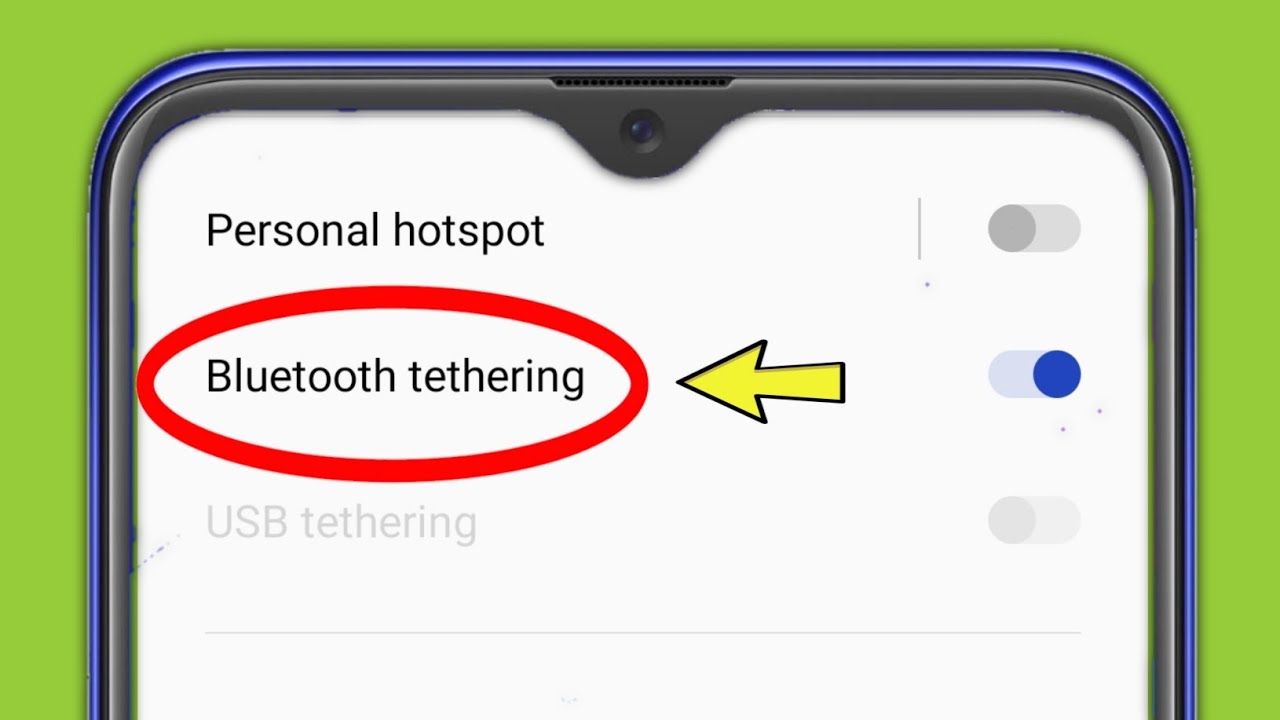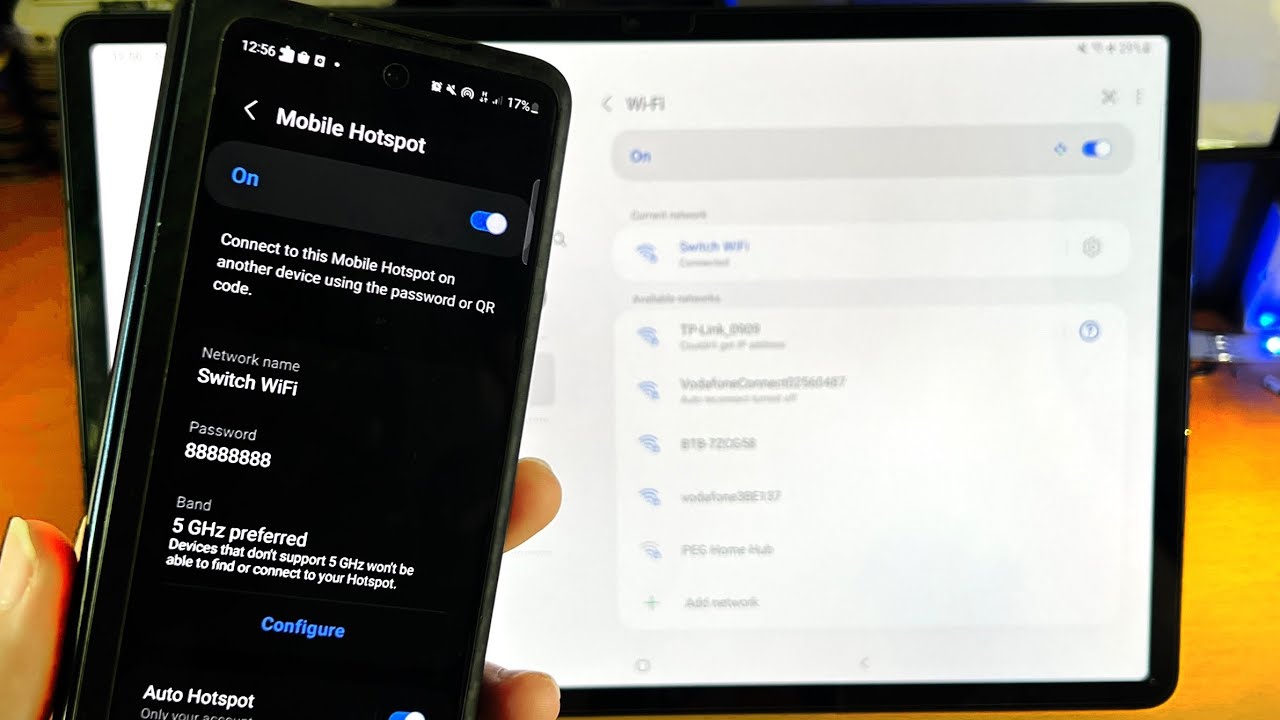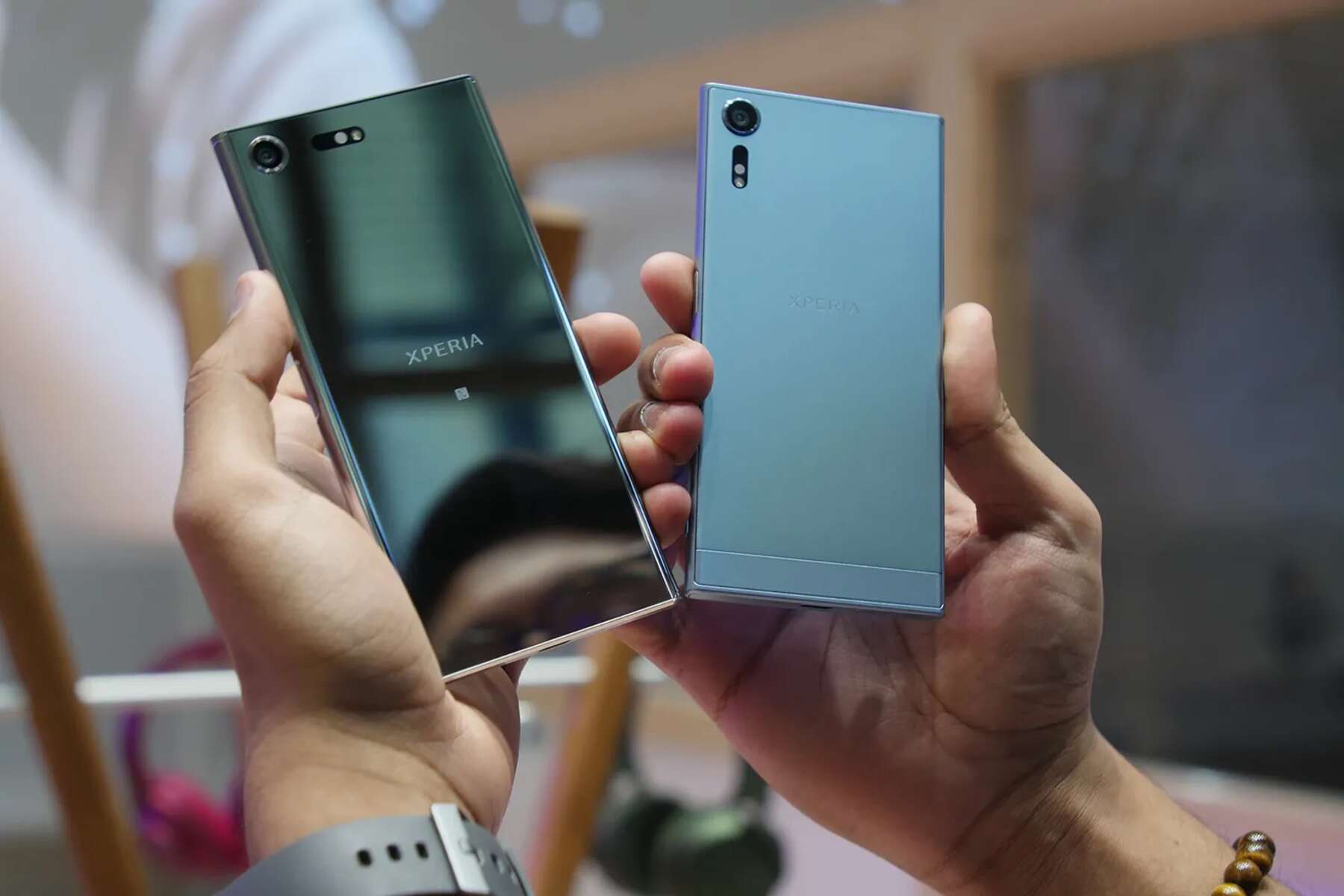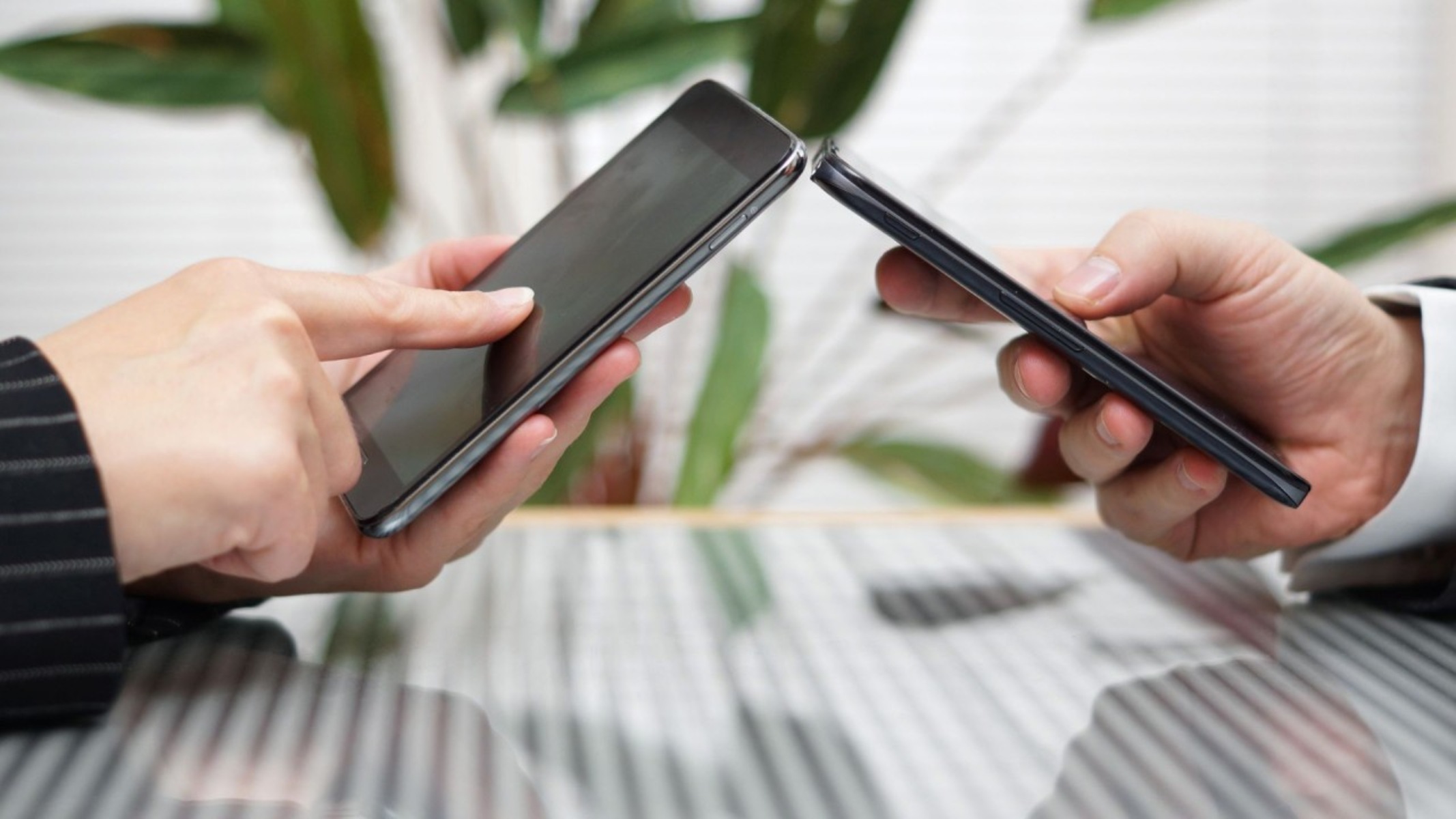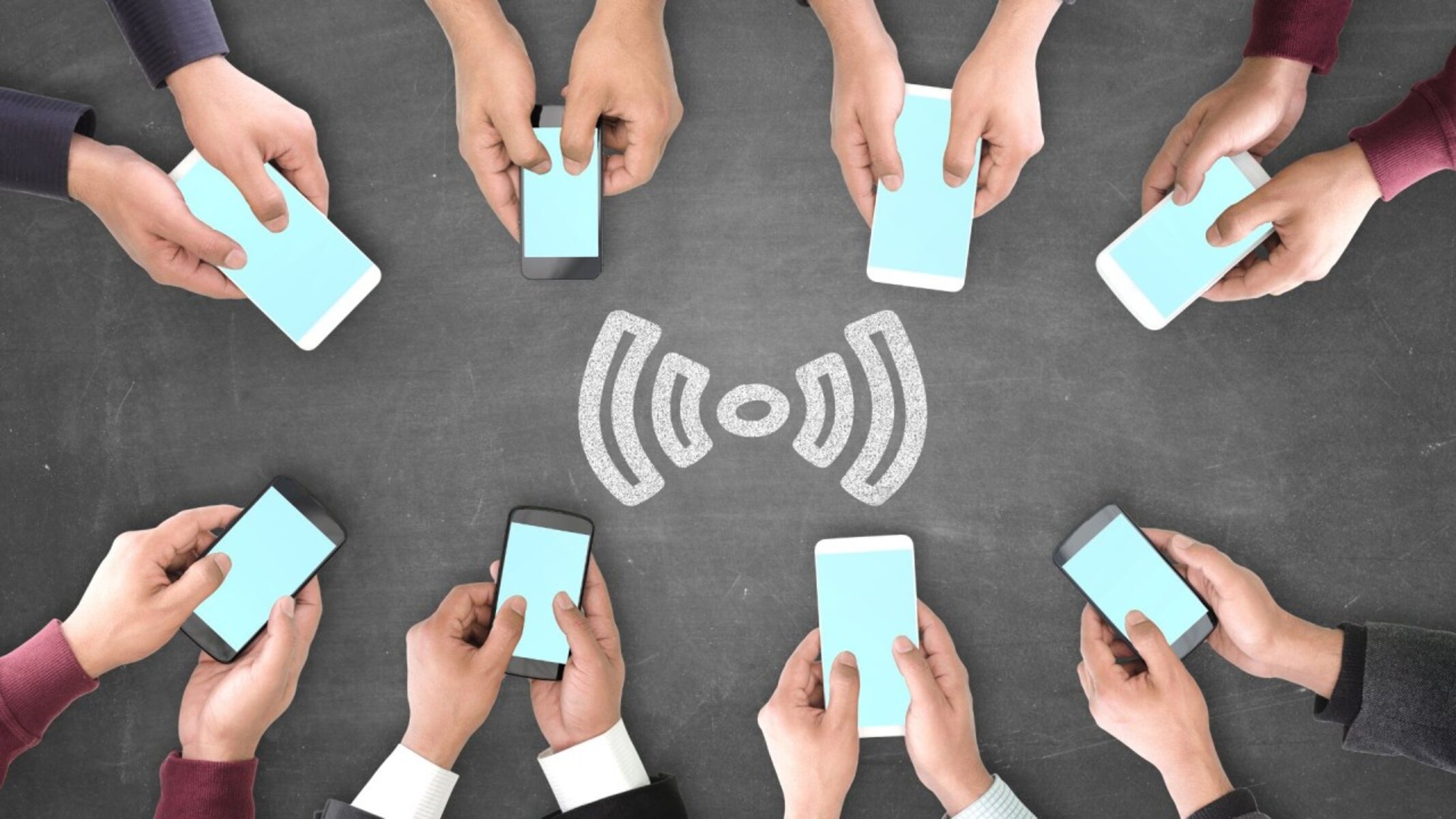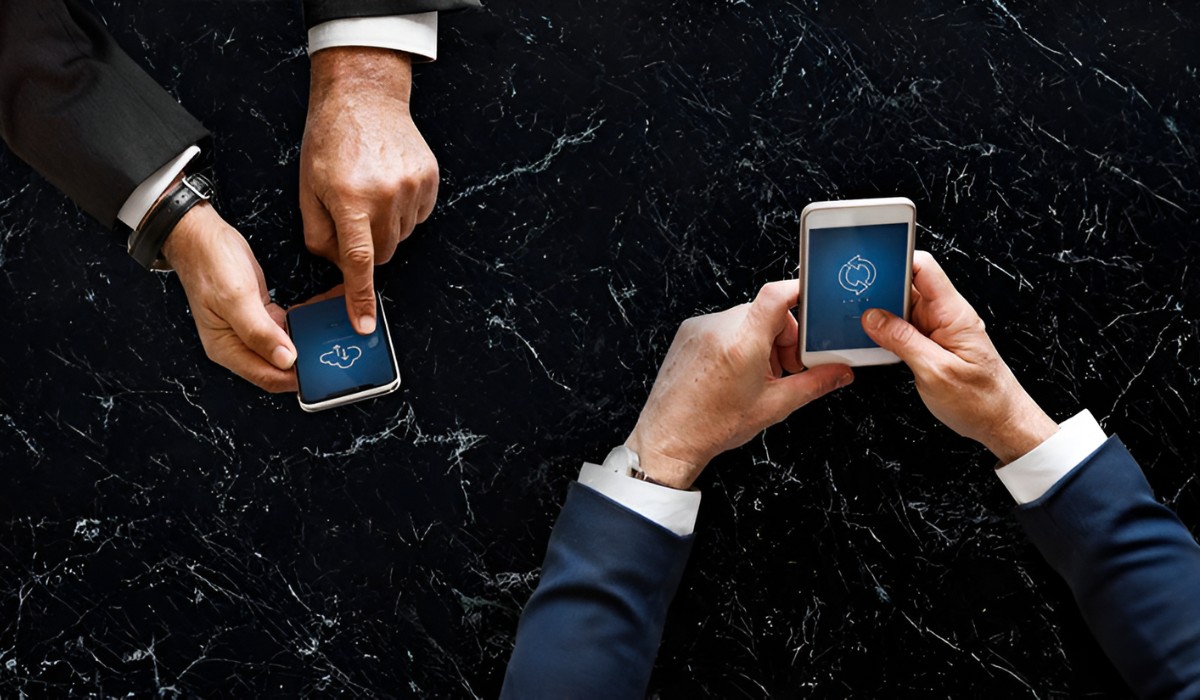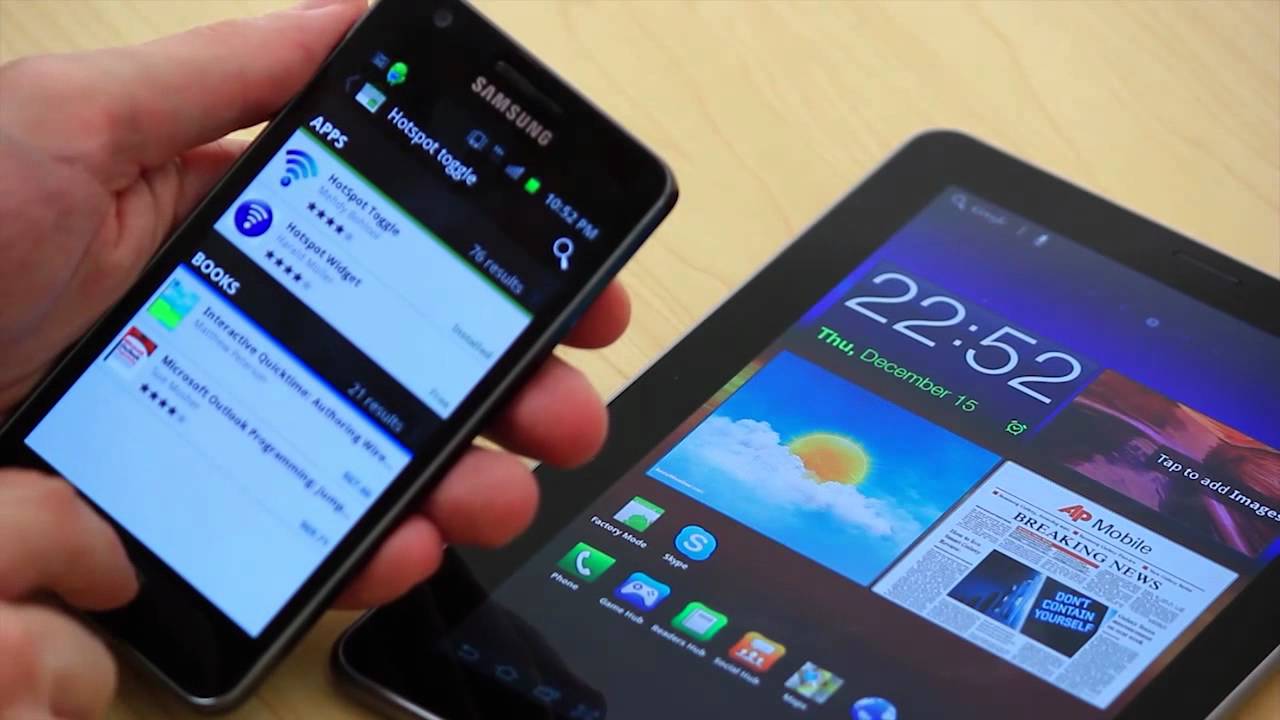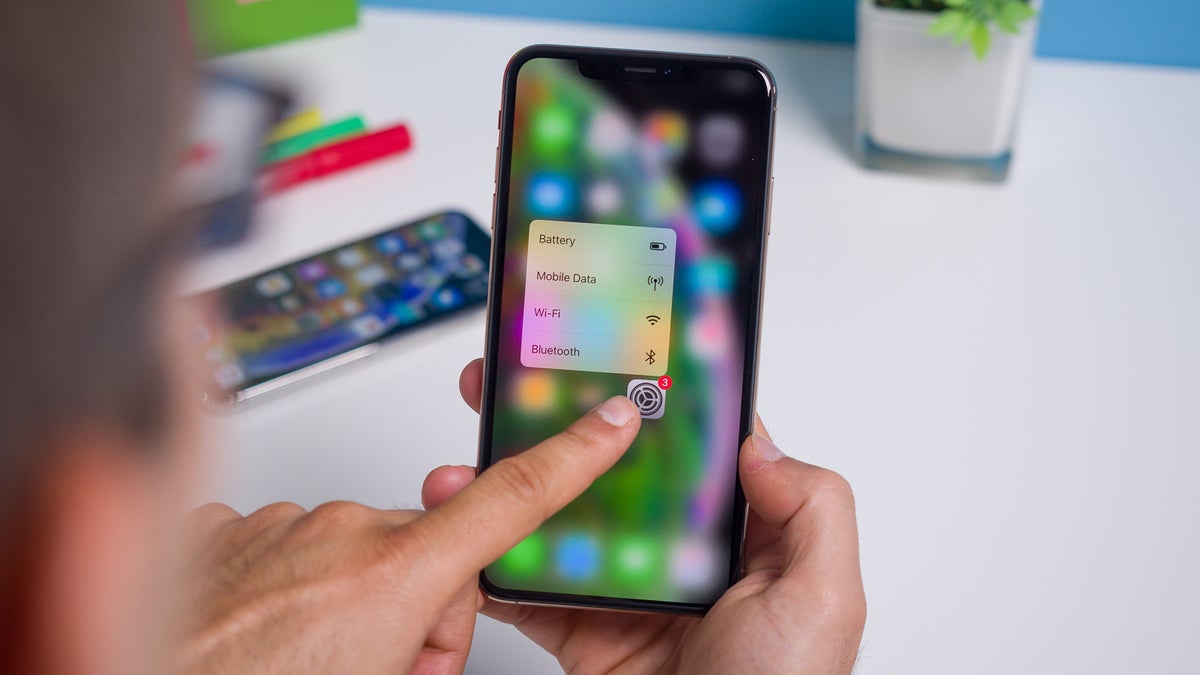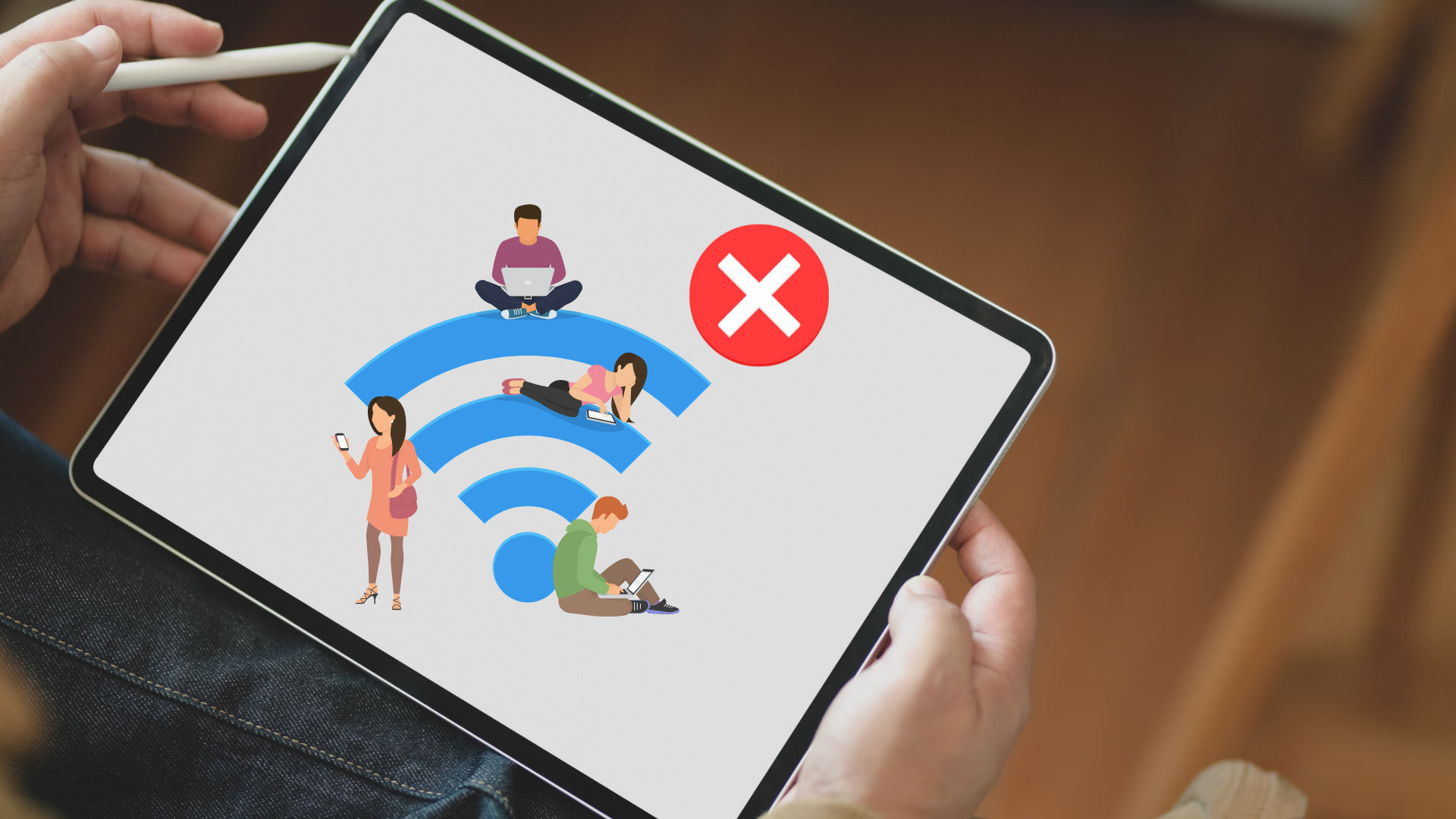Introduction
Bluetooth tethering is a wireless technology that allows you to connect your mobile device to another device, such as a laptop or tablet, and share its internet connection. With Bluetooth tethering, you can access the internet on your connected device wherever you are, without the need for a Wi-Fi network or a wired connection.
Bluetooth tethering has become increasingly popular due to its convenience and versatility. Whether you’re traveling, working remotely, or simply need to connect your devices on the go, Bluetooth tethering offers a reliable solution for staying connected.
This article will provide an overview of Bluetooth tethering, explaining how it works, the advantages and disadvantages of using it, and how to set it up on Android and iOS devices. We will also discuss common troubleshooting tips and alternatives to Bluetooth tethering.
So, if you’re looking for a way to share your mobile device’s internet connection with other devices, read on to learn more about Bluetooth tethering and how it can enhance your connectivity experience.
Overview of Bluetooth Tethering
Bluetooth tethering is a feature that allows you to share your mobile device’s internet connection with other devices through a Bluetooth connection. It enables you to use your phone or tablet as a modem for devices that don’t have their own internet connectivity.
When you activate Bluetooth tethering on your mobile device, it creates a personal area network (PAN) that other devices can join. Once connected, these devices can access the internet using your mobile device’s data plan.
Bluetooth tethering offers a simple and convenient way to share internet connectivity without the need for Wi-Fi networks or physical cables. It is particularly useful in situations where a Wi-Fi hotspot is unavailable or when you want to avoid using your mobile data for multiple devices.
One of the key advantages of Bluetooth tethering is its compatibility. Most modern devices, including smartphones, tablets, laptops, and even some IoT devices, support Bluetooth connectivity, making it a versatile and widely accessible option.
However, it’s important to note that Bluetooth tethering has some limitations. The range of a Bluetooth connection is typically shorter than that of Wi-Fi, which means the devices need to be in close proximity for a stable connection. Additionally, Bluetooth tethering may have a slower data transfer speed compared to Wi-Fi tethering.
Overall, Bluetooth tethering provides a reliable and convenient way to share internet connectivity, especially in scenarios where Wi-Fi is not available or practical. As we delve deeper into how Bluetooth tethering works, you will gain a better understanding of its functionalities and how to set it up on your devices. So, let’s learn more about the inner workings of Bluetooth tethering and how it can benefit you.
How Does Bluetooth Tethering Work?
Bluetooth tethering operates by creating a wireless connection between your mobile device and the device you want to share the internet connection with. Here’s a step-by-step breakdown of how Bluetooth tethering works:
- Enable Bluetooth on both devices: First, ensure that Bluetooth is turned on and visible on both your mobile device and the device you want to connect to, such as a laptop or tablet.
- Pair the devices: On your mobile device, go to the Bluetooth settings and scan for available devices. Once you find the device you want to connect to, select it and initiate the pairing process. Follow the prompts on both devices to complete the pairing.
- Activate Bluetooth tethering: After the devices are paired, go to the Bluetooth settings on your mobile device and look for the tethering or internet sharing option. Enable Bluetooth tethering or internet sharing to start broadcasting your mobile device’s internet connection.
- Connect the other device: On the other device, go to the Bluetooth settings and look for the paired mobile device. Select it and establish a Bluetooth connection.
- Enjoy shared internet connection: Once the devices are connected, the device you paired with your mobile device will be able to use its internet connection. You can now access the internet, browse the web, check emails, or use any online services on the connected device.
Bluetooth tethering relies on the Bluetooth technology’s Personal Area Network (PAN) profile, which enables devices to establish a connection and share data. The PAN profile allows your mobile device to act as a server, providing internet access to the connected device.
It’s important to note that the range of Bluetooth tethering is relatively limited compared to Wi-Fi. Typically, the devices need to be within a few meters of each other for a stable connection. If the devices are too far apart, the connection may become weak or drop altogether.
In terms of data transfer speed, Bluetooth tethering may not be as fast as Wi-Fi tethering. Bluetooth has a lower bandwidth, which can result in slower upload and download speeds. However, for basic internet browsing, checking emails, and using lightweight applications, Bluetooth tethering should be sufficient.
Now that you understand how Bluetooth tethering works, let’s explore the advantages and disadvantages of using this wireless technology for internet sharing.
Advantages of Bluetooth Tethering
Bluetooth tethering offers several advantages that make it a popular choice for sharing internet connectivity. Let’s explore some of the key benefits of using Bluetooth tethering:
- Compatibility: Bluetooth technology is widely supported by a range of devices, including smartphones, tablets, laptops, and even IoT devices. This compatibility makes Bluetooth tethering accessible and easy to set up on various devices.
- Convenience: Bluetooth tethering eliminates the need for Wi-Fi networks or physical cables to share the internet connection. It provides a hassle-free and portable solution for on-the-go internet access.
- Data savings: Bluetooth tethering allows you to share your mobile data plan with other devices, eliminating the need for separate data subscriptions or additional charges. This can result in significant cost savings, especially when using multiple devices simultaneously.
- Security: Bluetooth tethering offers a secure connection between devices. Each pairing between devices generates a unique encryption key, ensuring that the shared data remains private and protected from potential threats.
- Power efficiency: Bluetooth technology is designed to consume minimal power, making it an energy-efficient option for internet sharing. This can help prolong the battery life of your mobile device.
- Portable hotspot alternative: In situations where creating a Wi-Fi hotspot is not feasible or permitted (such as in public places with restricted access), Bluetooth tethering serves as a reliable alternative to provide internet connectivity to nearby devices.
These advantages make Bluetooth tethering an attractive option for those who value convenience, compatibility, and cost-effectiveness. However, it’s important to consider the limitations and potential drawbacks before solely relying on Bluetooth tethering for internet sharing. Let’s explore some of the disadvantages in the next section.
Disadvantages of Bluetooth Tethering
While Bluetooth tethering offers several benefits, it’s essential to be aware of its limitations and potential drawbacks. Here are some of the disadvantages of using Bluetooth tethering for internet sharing:
- Range limitations: Bluetooth has a shorter range compared to Wi-Fi, typically limited to a few meters. This means that the devices need to be in close proximity for a stable connection. Moving too far away from the paired device can result in a weak or lost connection.
- Slower data transfer speeds: Bluetooth tethering may not provide the same data transfer speeds as Wi-Fi tethering. Bluetooth technology has a lower bandwidth, which can result in slower upload and download speeds, especially when transferring large files or streaming high-quality media.
- Device compatibility: While Bluetooth technology is widely supported, there can be compatibility issues between different devices. Some older devices may have limited Bluetooth capabilities or might not support Bluetooth tethering, restricting the number of devices you can connect to.
- Connection stability: Bluetooth connections can be susceptible to interference from other devices or physical obstructions. In crowded environments or areas with many Bluetooth devices, there is a higher chance of experiencing connection drops or disruptions.
- Data usage limitations: Depending on your mobile data plan, there may be limitations or restrictions on the amount of data you can use. Sharing your mobile data with other devices through Bluetooth tethering can quickly consume your data allowance, leading to potential additional charges or reduced data speeds.
- Battery drain: While Bluetooth technology is power efficient, using it for extended periods of time can still impact the battery life of your mobile device. It’s important to monitor the battery level and consider external power sources when using Bluetooth tethering for prolonged internet sharing.
Despite these disadvantages, Bluetooth tethering remains a viable option for sharing internet connectivity, particularly in situations where Wi-Fi networks are unavailable or impractical. By understanding the limitations and planning accordingly, you can make the most out of Bluetooth tethering for your internet sharing needs.
Setting Up Bluetooth Tethering on Android Devices
If you have an Android device and want to enable Bluetooth tethering, follow these steps:
- Open the Settings app on your Android device. You can usually find it in the app drawer or by swiping down from the top of the screen and tapping the gear icon.
- Scroll down and select “Connections” or “Network & Internet,” depending on your device’s settings layout.
- Tap on “Bluetooth & device connection” or a similar option.
- Make sure the Bluetooth toggle switch is turned on to enable Bluetooth.
- Scroll down to find the “Tethering & portable hotspot” or “Mobile hotspot” option.
- Tap on it and then select “Bluetooth tethering.”
- Your Android device will start searching for nearby devices. On the device you want to connect, enable Bluetooth and make sure it’s visible to other devices.
- Once your Android device detects the other device, tap on it to establish the Bluetooth connection.
- Follow any on-screen prompts to complete the connection setup.
After the Bluetooth connection is established, the connected device will be able to access the internet through your Android device’s data plan. You can confirm the connection by checking the Bluetooth tethering icon in the status bar or the Bluetooth settings on both devices.
Please note that the steps may vary slightly depending on the Android device model and the version of the operating system you’re using. If you encounter any difficulties, refer to the device’s user manual or consult the manufacturer’s support resources for specific instructions.
Now that you know how to set up Bluetooth tethering on Android devices, let’s move on to learning how to enable Bluetooth tethering on iOS devices in the next section.
Setting Up Bluetooth Tethering on iOS Devices
If you have an iOS device and want to enable Bluetooth tethering, follow these steps:
- Open the Settings app on your iOS device. It is represented by a gear icon and can be found on the home screen.
- Scroll down and tap “Personal Hotspot” or “Internet Tethering,” depending on your iOS version.
- Tap the switch next to “Allow Others to Join” or “Bluetooth” to enable Bluetooth tethering.
- Bluetooth will now be active on your iOS device, and it will be visible to other devices nearby.
- On the device you want to connect, enable Bluetooth and make sure it’s visible to other devices.
- On your iOS device, you may see a message asking you to pair with the device you want to tether to. Follow the on-screen prompts to connect the two devices. You may need to enter a passcode or confirm the pairing.
- Once the devices are paired, you’ll see a Bluetooth icon in the status bar indicating a successful connection.
With Bluetooth tethering enabled on your iOS device, the connected device will be able to utilize the internet connection provided by your iOS device’s data plan.
Please note that the steps may slightly differ depending on the iOS version you’re using. If you’re having trouble locating the Bluetooth tethering option or connecting to a device, consult the iOS device’s user manual or visit the official Apple support website for detailed instructions.
Now that you know how to set up Bluetooth tethering on iOS devices, let’s move on to troubleshooting common Bluetooth tethering issues in the next section.
Troubleshooting Bluetooth Tethering Issues
While Bluetooth tethering is generally reliable, you may encounter some issues when setting it up or during usage. Here are some common troubleshooting tips to help you resolve Bluetooth tethering issues:
- Ensure Bluetooth is turned on: Double-check that Bluetooth is enabled and visible on both devices. If not, enable Bluetooth on both devices and try reconnecting.
- Restart devices: Sometimes, a simple restart can resolve connectivity issues. Restart both the mobile device providing the internet connection and the device that’s tethered to it.
- Forget and re-pair devices: On both devices, unpair or forget the Bluetooth connection and then re-pair them. This can help establish a fresh connection and resolve any pairing-related issues.
- Confirm device compatibility: Ensure that both devices support Bluetooth tethering and are compatible. Older devices or certain models may not have this feature.
- Check Bluetooth range: Make sure the devices are within the Bluetooth range. Move the devices closer to each other to ensure a stable connection. Obstructions like walls or other electronic devices can interfere with the Bluetooth signal.
- Restart Bluetooth services: In the Bluetooth settings of the mobile device, you may find an option to restart or reset the Bluetooth services. Try restarting these services and test the tethering connection.
- Update software: Ensure that both devices have the latest software updates installed. Outdated software can sometimes cause compatibility issues or performance glitches.
- Check data plan: Verify that your mobile device has an active and sufficient data plan. Insufficient data or restricted access can prevent successful Bluetooth tethering.
- Try a different connection: If you’re still experiencing issues, consider using an alternative connection method, such as Wi-Fi tethering or a physical cable, to check if the problem is specific to Bluetooth tethering or a broader connectivity issue.
If none of these troubleshooting tips resolve your Bluetooth tethering issues, it’s recommended to consult the user manuals or contact the support resources of the respective devices for further assistance.
Now that we’ve covered some solutions to common Bluetooth tethering issues, let’s explore alternative methods for sharing internet connectivity in the next section.
Alternatives to Bluetooth Tethering
While Bluetooth tethering is a convenient option for sharing internet connectivity, there are alternative methods available that may better suit your needs. Let’s explore a few alternative options:
- Wi-Fi Tethering: Wi-Fi tethering, also known as mobile hotspot, allows you to create a Wi-Fi network using your mobile device’s cellular data. This enables other devices to connect to your device and access the internet. Wi-Fi tethering typically offers a wider range and faster data transfer speeds compared to Bluetooth tethering.
- USB Tethering: USB tethering allows you to share your mobile device’s internet connection with another device using a USB cable. By connecting your mobile device to another device via USB, you can use its internet connectivity directly. USB tethering can provide faster and more stable connections compared to both Bluetooth and Wi-Fi tethering.
- Mobile Broadband Devices: Mobile broadband devices, such as portable Wi-Fi hotspots or USB dongles, offer dedicated internet connectivity independent of your mobile device. These devices use cellular networks to provide internet access and can support multiple devices simultaneously. They are especially useful in situations where you require a reliable and widespread connection, such as during travel or in areas with limited Wi-Fi coverage.
- Tethering Apps and VPNs: There are various third-party tethering apps available, both for Android and iOS devices, that can enhance your internet sharing experience. These apps provide additional features and customization options for tethering, such as managing data usage, monitoring connected devices, or optimizing network settings. Additionally, VPN (Virtual Private Network) services can enable secure internet sharing and provide encryption for your tethered connections.
When considering alternative methods, it’s important to assess your specific requirements, such as range, data speeds, and device compatibility. Additionally, check with your mobile service provider for any restrictions or additional charges associated with tethering or using alternative connectivity options.
By exploring these alternatives, you can find the method that best suits your needs and enhances your internet sharing capabilities.
Conclusion
Bluetooth tethering is a convenient and versatile method for sharing internet connectivity between devices. It allows you to utilize your mobile device’s data plan to provide internet access to other devices without requiring a Wi-Fi network or physical cables.
In this article, we provided an overview of Bluetooth tethering, explaining how it works and its advantages and disadvantages. We also explored the steps for setting up Bluetooth tethering on both Android and iOS devices.
Bluetooth tethering offers compatibility, convenience, and cost savings, making it an attractive option for on-the-go internet access. However, it does have limitations in terms of range and data transfer speeds.
If you encounter any issues with Bluetooth tethering, we provided troubleshooting tips to help you resolve common connectivity problems. Additionally, we discussed alternative methods such as Wi-Fi tethering, USB tethering, mobile broadband devices, and third-party tethering apps.
By considering these alternatives and understanding the pros and cons of Bluetooth tethering, you can choose the method that best suits your needs for sharing internet connectivity.
We hope this article has provided you with valuable insights into Bluetooth tethering and its functionalities. Whether you’re traveling, working remotely, or simply in need of internet access on multiple devices, Bluetooth tethering can be a reliable and convenient solution.
Now, go ahead and explore the world of Bluetooth tethering to enhance your connectivity experience!







